Are you seeing signs of moisture in your home?
Foggy Windows?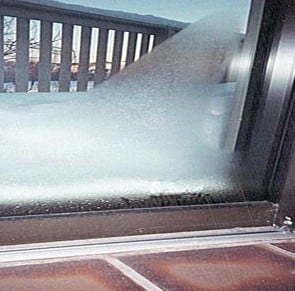 |
Ice Build-up? 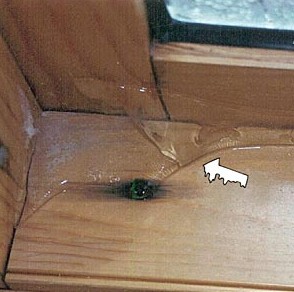 |
Or what looks like a roof leak? Check your humidistat setting.
The Issue: Humidifiers are used to add moisture to your house air. In colder weather, your home is less able to tolerate higher levels of humidity and condensation is more likely to occur.
The Solution: If there is condensation or ice forming around windows and doors or water spots forming on ceilings and walls or frost or moisture on the underside of the plywood in the attic, lower the humidistat setting.
Step 1: Locate your humidistat. The humidistat could be on the main floor near your thermostat, or it could be mounted on the ductwork of your heating system.
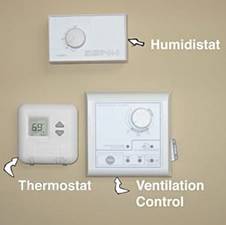 |
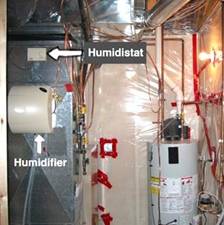 |
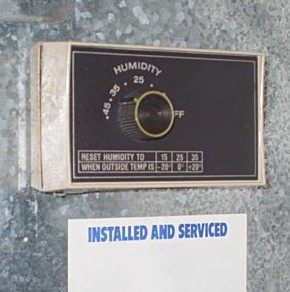 |
Step 2: If you have it, read the manufacturer’s instructions to make sure you are maintaining the proper level of humidity. As the outdoor temperature fluctuates, it is necessary to adjust the humidity level of your system. Here are some recommended humidity levels compared to outside temperatures.
| When the outside temperature is: 20 to 40 F 10 to 20 F 0 to 10 F -10 to 0 F -20 to -10 F -20 or below F |
Do not exceed this humidity level: 40% 35% 30% 25% 20% 15% |

Final Thoughts: Since there are many factors that affect humidity levels in your home, these guidelines do not guarantee that condensation will not appear. For example, in a better insulated house, you will generally be able to set the humidistat higher than in a drafty uninsulated house.
A good rule of thumb for controlling relative humidity in the winter: if condensation appears on your windows, the humidity is too high and you should turn down your humidistat in 5% increments until symptoms disappear. If you experience static electricity or health problems such as nose bleeds, turn up hour humidistat in 5% increments until symptoms disappear.
Summer Months – You should not operate the whole house humidifier during the summer months. Be sure that it is not operating when the air conditioner is on. Central humidifiers may have a damper. For proper operation, this damper must be adjusted twice each year. The damper should be open during the heating season and closed during the cooling season.
Other possible issues: There are other wintertime issues that could cause water to enter you home or business. If water is entering the outside walls of your home then check for ice damning problems. If there are various spots on your drywall toward the outside wall check to make sure you have adequate insulation and that the soffit vents are not blocked with insulation. The goal is to keep the heat in the house (with insulation) and keep the attic temperature closer to the outside air temperature (proper ventilation).















